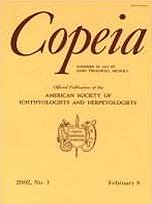Relationships among the 18 extant species of parasitic lamprey (Petromyzontiformes) were determined using a cladistic analysis of 32 mainly morphological characters. Because previous analyses support all known fossils as phylogenetically older or the same age as living lampreys, a composite agnathan fossil was used as an outgroup. A consensus of three equally parsimonious trees revealed a trichotomy between a monophyletic northern hemisphere clade and the southern hemisphere genera Geotria and Mordacia. The monophyletic status of the northern hemisphere lampreys and their classification in a single family Petromyzontidae was corroborated. It is suggested that the two southern hemisphere lamprey genera be retained as distinct families. Among northern hemisphere species, Ichthyomyzon and Petromyzon form a monophyletic group sister to the remaining genera. Caspiomyzon is sister to Tetrapleurodon Entosphenus Lethenteron Eudontomyzon Lampetra, with Tetrapleurodon in turn being sister to a group comprising Entosphenus and a clade containing Lethenteron and its sister group Eudontomyzon Lampetra. Differences in many characters are related to differences in modes of feeding and behavior. In a phylogenetic context, dentitional characters are resolved as related either to blood feeding (Petromyzon, Ichthyomyzon, and Mordacia) and hypothesized to be plesiomorphic, or to flesh feeding (Eudontomyzon, Lampetra, and Geotria).
How to translate text using browser tools
1 December 2003
Phylogeny of Living Parasitic Lampreys (Petromyzontiformes) Based on Morphological Data
Howard S. Gill,
Claude B. Renaud,
François Chapleau,
Richard L. Mayden,
Ian C. Potter
ACCESS THE FULL ARTICLE





